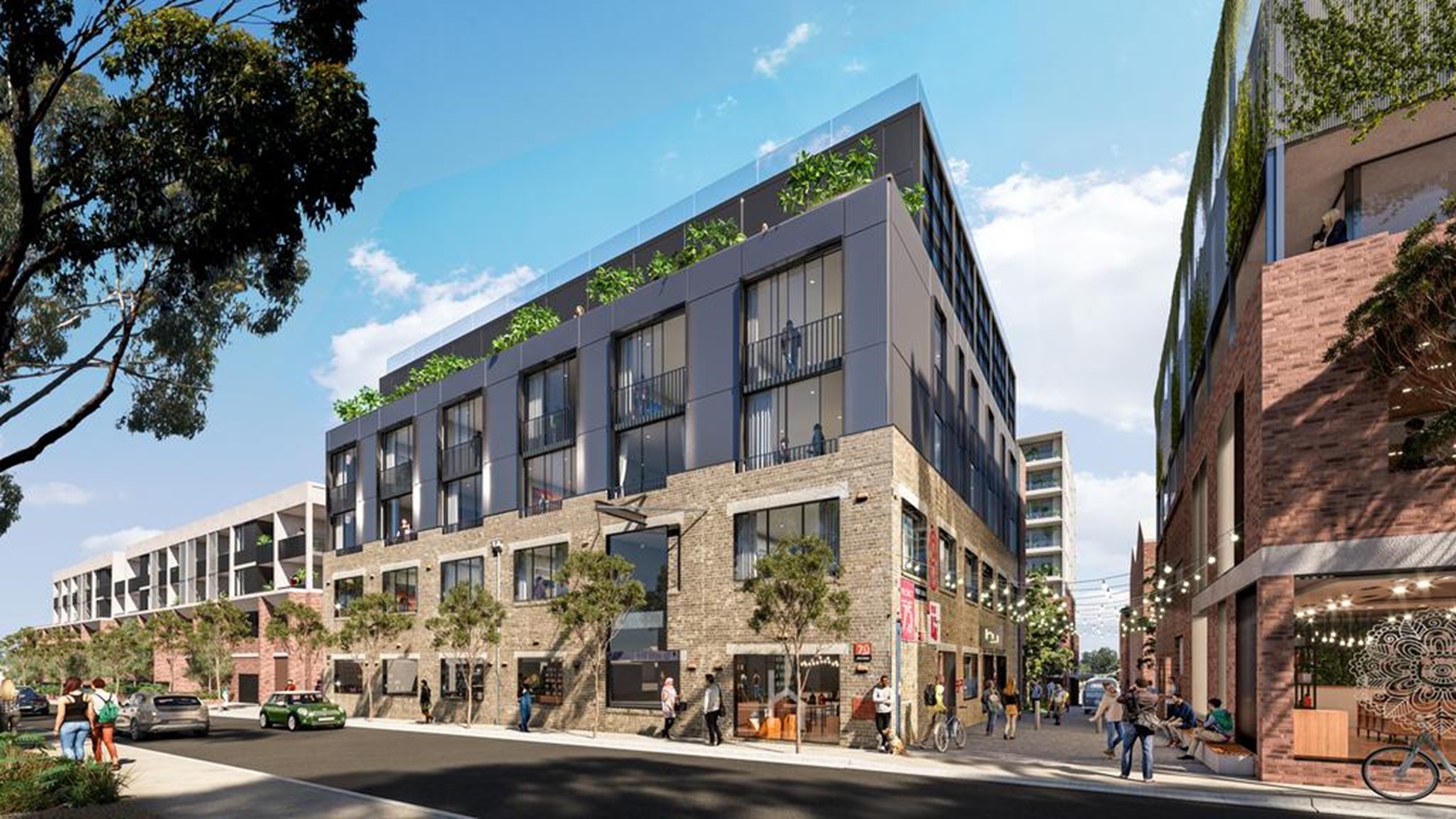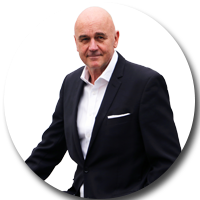Brave new world of build-to-rent could change landscape on housing affordability
(The Australian, August 27, 2021)

The build-to-rent project planned by Home In the Sydney suburb of St Peters.
Hardly a week goes by without a new developer popping up to unveil ambitions in the country’s expanding build-to-rent sector, which is fast losing its image as a nascent area and moving into the mainstream.
US heavyweight Hines is the latest. It has just announced its first project in Melbourne where it will launch 250 apartments in funky inner-city Brunswick.
The company is already a major player offshore and like fellow heavyweights Greystar, Oxford and Sentinel, it is hoping to parlay its knowledge into deals on the ground.
Hines country head David Warneford says that the firm has deep global expertise in residential and BTR development, operations and investments, with substantial platforms in the US and Europe.
The company’s new head of living, Sam Bisla, says Hines wants to be a leader in the sector, where big companies are forging ahead despite the pandemic and tax hurdles the federal government has been reluctant to fix.
“Hines, along with the world’s largest institutions, has seen the long-term defensive nature of the asset class during a turbulent time,” Mr Bisla said. “We see an investment window in Australia and are strategically building our pipeline.”
More large local developers are catching on. Stockland is completing a strategic review and has flagged a shift into the area.
New chief executive Tarun Gupta wants to capitalise on the company’s expertise in residential development. “We will build further capability to do mixed-use projects across our platform and are exploring other avenues to build investment-grade residential products such as higher-density build-to-rent,” he said.
Mirvac chief executive Susan Lloyd-Hurwitz has been a trailblazer in the listed sector and says the company’s first build-to-rent asset, LIV Indigo, in Sydney’s Homebush is now 80 per cent leased and renting at a premium.
“We are learning every day about build-to-rent operations and how to curate a vibrant community. The $1.4bn development pipeline is progressing well on all fronts,” she said, noting the company has more projects in Melbourne and Brisbane.
Mirvac’s first build-to-rent asset, LIV Indigo in Sydney’s Homebush, is now 80 per cent leased
The rush of big players, accompanied by smaller groups looking at lower grade or scale projects, has driven two effects. It is now firmly on the radar of big institutional investors, who will be crucial to backing projects, and the idea is increasingly permeating through to consumers.
But the whole concept challenges Australia’s love of home ownership by opening the door for large institutions to play a significant role as landlord to residential tenants.
Despite the encouragement of state governments, it has drawn a cool response from Prime Minister Scott Morrison, amid concerns that traditional home ownership is increasingly out of reach.
The surge of new players has also prompted concerns that land prices are just running too hot and newer entrants might be caught out as it gets harder to make schemes stack up.
The Home brand, which was formed out of Daniel Grollo’s Grocon operation and is still backed by the fallen tycoon, is one of the veterans of the scene with four years of experience. It is expanding in Sydney, adding to its Melbourne projects.
The head of Home, Christian Grahame, says the developer is aiming for discerning, mostly white collar renters, who are tenants by choice and want the higher quality, amenity and locations of built-to-rent complexes.
Home is also leveraging its skills as a mixed-use developer. At its Richmond site it is also undertaking a retail precinct and offices in a pointer to how other big players may get into the area.
Mr Grahame said that there were live buildings that proved up the concept, including the Smith Collective, the converted Commonwealth Games Village on the Gold Coast.
He points to the advantages of professional management making for a better experience, overlaid by more amenity and services than the existing residential stock.
Inside Mirvac’s LIV Indigo at Sydney Olympic Park.
Mr Grahame said state governments were broadly supportive but warned that without further concessions, the industry would not grow to its full potential. “You still need some federal tax concessions in order to make it more attractive as well as [reform] on managed investment trusts,” he said.
He is hopeful that as more facilities are developed local super funds will enter the sector. “They really haven’t yet in a meaningful way but I think they will,” he said.
Home is keen to keep growing in Melbourne and Sydney, and eventually Brisbane, as it looks to bring its local knowledge to new areas.
“We have really good knowledge of the Australian property scene and lifestyle trends and so we try to put an Australian perspective on it,” he said.
Home’s latest development in St Peters in Sydney’s inner west is more campus-style than traditional high rise. The 230-unit complex is designed to fit into the neighbourhood’s industrial aesthetic.
The existing Precinct 75 site will be overhauled, remaking the existing creative hub into what it dubs a mixed-use urban village, with the eight buildings designed by COX Architecture.
Home’s first build-to-rent residence in Melbourne’s inner-city hub of Southbank will sport 400 premium apartments across 61 levels, with amenities to include co-working spaces and hotel-style health and wellness facilities.
Even larger developers will leverage off their development pipelines.
Like Mirvac, Frasers is working under the Palaszczuk government’s build-to-rent program, and is developing a key worker site in Brisbane‘s Fortitude Valley, while also assessing its existing sites in Sydney.
Chief executive Anthony Boyd says the younger generation is shifting away from property ownership. “There is a bubble of the population that will see build-to-rent as a really attractive alternative,” he said. “It’s not going to take over the build-to-sell market, but as an adjacency I think there’s strong support in demographic terms.”
Mirvac’s LIV Indigo build-to-rent project at Sydney Olympic Park. The company has more projects in Melbourne and Brisbane.
He said cities needed diversity of housing but there were headwinds including tax settings and getting large enough to attract big investors. “There is still a bit of a way to go till we get to that scale point where institutional investors can feel like they’ve gotten very comfortable pathways to enter into investments,” he said.
Another headwind is market-based, where the best uses of sites are still build-to-sell. But he believes that good operators will be able to charge premiums for quality products. Frasers is working very closely with its existing hospitality business on how they can work in the area.
The company is assessing sites including at Sydney’s Wolli Creek. “We’re looking at opportunities that we have with our existing large-scale projects,” Mr Boyd said. “It’s probably a slow burn because I just think it has to be an organic evolution.”
He expects the market will mature and the best operators will come to the fore. “They’ll probably just naturally evolve and get more business from other property owners,” he said.
Greystar Australia managing director Chris Key has secured $1.3bn to roll out new projects in the sector. The company has two Melbourne projects sporting 1325 units and its latest site will take that to 1800.
Mr Key said there was strong demand from capital for the new asset class and is confident backers will be there for the right product.
“If you are a believer that borders will reopen and we will return to a level of normalcy … and younger people want to live in cities with activities, well, you’ve got to believe that the demand is there,” he said.
Critically big global capital wants to back the local sector. “It is the most traded asset class from a liquidity standpoint in institutional markets,” he said. ”It trades tighter than traditional real estate because it’s seen as a lower risk proposition.”
Mr Key said that it was an area that Australia had been missing as an investment destination. But he cautions that the momentum in the sector can be overestimated and it is still just getting a foothold. “I remain optimistic in believing that we will have a genuine BTR institutional asset class here in Australia and it’s been proven in markets around the world,” he said.



